- Home
- Mark R. Levin
Unfreedom of the Press Page 2
Unfreedom of the Press Read online
Page 2
“Democrats,” Gallup reported, “largely trust the media and Republicans largely distrust it. The divergence based on political affiliation was also seen in perceptions of bias in the news. Forty-five percent of Americans say there is a ‘a great deal’ of political bias in news coverage (up from 25 percent in 1989); 67 percent of Republicans say they see ‘a great deal’ of political bias in the news, versus only 26 percent of Democrats.”13
As will become clear, the perceptions revealed in these surveys are realities, and the evidence is overwhelming that journalists as a group reject, in one form or another, the commission’s admonition that reporters should strive to separate fact from opinion; rather, in varying ways and to different degrees, they embrace the idea of news “interpretation” or news “analysis” in the selection, gathering, and reporting of news, influenced by and filtered through the progressive mentality.
While there is much more to the commission’s report, its closing summary is especially noteworthy: “The character of the service required of the American press by the American people differs from the service previously demanded, first, in this—that it is essential to the operation of the economy and to the government of the Republic. Second, it is a service of greatly increased responsibilities both as to the quantity and as to the quality of the information required. In terms of quantity, the information about themselves and about their world made available to the American people must be as extensive as the range of their interests and concerns as citizens of the self-governing, industrialized community in the closely integrated modern world. In terms of quality, the information provided must be provided in such a form, and with so scrupulous a regard for the wholeness of the truth and the fairness of its presentation, that the American people may make for themselves, by the exercise of reason and of conscience, the fundamental decisions necessary to the direction of their government and of their lives.”14
A more recent effort to define modern journalism was undertaken by former journalists Bill Kovach and Tom Rosenstiel, who claim to have “distilled from our search, some clear principles that journalists agree on—and that citizens have a right to expect. . . . These are the principles that have helped both journalists and the people in self-governing systems to adjust to the demands of an ever more complex world. They are the elements of journalism. The first among them is that the purpose of journalism is to provide people with information they need to be free and self-governing.”15 Kovach and Rosenstiel list the elements of journalism as follows:
• Journalism’s first obligation is to the truth.
• Its first loyalty is to citizens.
• Its essence is a discipline of verification.
• Its practitioners must maintain an independence from those they cover.
• It must serve as an independent monitor of power.
• It must provide a forum for public criticism and compromise.
• It must strive to make the significant interesting and relevant.
• It must keep the news comprehensive and in proportion.
• Its practitioners have an obligation to exercise their personal conscience.
• Citizens, too, have rights and responsibilities when it comes to news.16
These elements of journalism appear noncontroversial when taken at face value. But are they, in truth, the working guidelines for most modern newsmen?
Kovach and Rosenstiel fear that the great challenge—if not threat—to journalism today, as differentiated from past press transitions, results from the nature of the ownership of news outlets. “For the first time in our history, the news increasingly is produced by companies outside journalism, and this new economic organization is important. We are facing the possibility that independent news will be replaced by rumor and self-interested commercialism posing as news. If that occurs, we will lose the press as an independent institution, free to monitor the other powerful forces and institutions in society.”17 “In the new century, one of the most profound questions for a democratic society is whether an independent press survives. The answer will depend on whether journalists have the clarity and conviction to articulate what an independent press means and whether, as citizens, the rest of us care.”18
While the consolidation of news outlets may or may not threaten the independence of news reporting, depending on the relationship between the particular conglomerate and the acquired news company, perhaps of greater moment is the advent of social media and its influence on news reporting. In either case, regardless of platform, format, or structure, the more important issue relates to content—that is, what is the nature and purpose of the modern newsroom and journalism.
Kovach and Rosenstiel raise the issue of “diversity” in the newsroom, which they argue is a vital priority to ensure the integrity of the news product and the credibility of those who produce it. They write, among other things, that “[t]he goal of diversity should be to assemble not only a newsroom that might resemble the community but also one that is as open and honest so that this diversity can function. This is not just racial or gender diversity. It is not just ideological diversity. It is not just social class or economic diversity. It is not just numerical diversity. It is what we call intellectual diversity, and it encompasses and gives meaning to all the other kinds.”19
Is not the greater danger to an independent press “ideology” in the newsroom? Whether a monopoly of ideologically based reporting, which plainly exists today, or “intellectual diversity,” should not ideology be reserved for the opinion-editorial pages of newspapers or the commentary segments of broadcasts? Whatever happened to “professional journalism” and the promise or at least suggestion that the press ought to pursue the objective truth in the gathering and reporting of news?
But apparently even the notion of objectivity in reporting is subject to dispute and debate. During the turn of the last century, particularly in the early 1920s, as the Progressive Era began to take hold, the “scientific” approach to journalism—that is, a press held to certain professional standards and processes—spread through newsrooms, as it spread through government. Kovach and Rosenstiel give voice to the arguments made in 1919 by Walter Lippmann, a venerated reporter and commentator at the time, and Charles Merz, an associate editor of the New York World, in which they condemned the New York Times’ coverage of the Russian Revolution. Lippmann and Merz wrote, in part, that “[i]n the large, the news about Russia is a case of seeing not what was, but what men wished to see.” The solution, argued Lippmann and Merz, exists in “the scientific spirit. . . . There is but one kind of unity possible in a world as diverse as ours. It is unity of method, rather than aim; the unity of disciplined experiment.” In this, Lippmann and Merz are projecting the progressive approach to most things onto the profession of journalism and the press generally.20
Kovach and Rosenstiel elaborated: “When the concept of objectivity originally migrated to journalism, it was not meant to imply that journalists were free of bias. Quite the contrary. The term began to appear as part of journalism early in the last century, particularly in the 1920s, out of a growing recognition that journalism was full of bias, often unconscious. The call for journalists to adopt objectivity was an appeal for them to develop a consistent method of testing information—a transparent approach to evidence—precisely so that personal and cultural biases would not undermine the accuracy of their work.”21
“In the nineteenth century,” write the authors, “journalists talked about something called realism. This was the idea that if reporters simply dug out the facts and ordered them together, the truth would reveal itself rather naturally. Realism emerged at a time when journalism was separating from political parties and becoming more accurate. It roughly coincided with the invention of what journalists called the inverted pyramid, in which a journalist lines the facts up from the most important to the least important, thinking it helps audiences understand things naturally.”22
But “good intentions” and “honest effor
ts” are not enough.
Thus the journalist’s objectivity is not an issue, they argue. The focus must be on an objective process and standard by which the journalist must gather, digest, and report the news. “In the original concept . . . the journalist is not objective, but his method can be. The key was in the discipline of the craft, not the aim. . . . Most people think of objectivity in journalism as an aim, not a method. And many citizens scoff at this intention, since they have little idea of the methods journalists might be employing. Yet the notion that the aim of objectivity is insufficient without a unity of method to put it into practice is as valid today as ever. . . .”23
It is not clear, then, why Kovach and Rosenstiel raise the issue of newsroom diversity as an imperative unless they understand that an objective method and standard for vetting news is unlikely to occur in a newsroom populated by ideologues and party partisans. The aims then become the goal. Kovach and Rosenstiel as much as admit it. Even so, if the measure of modern journalism is, at least in part, determined by the intellectual diversity of newsrooms, it is apparent if not obvious that news outlets and journalists are overwhelmingly progressive in their thinking and attitudes and share the ideological mindset characteristic of the present-day Democratic Party—the same progressive mindset that has devoured so many of the nation’s cultural and societal institutions during the last century, as I explain at length in Rediscovering Americanism: And the Tyranny of Progressivism.
George Mason professor Tim Groseclose, formerly of the University of California, Los Angeles, developed an “objective, social-scientific method” in which he calculates how the progressive political views of journalists and media outlets distort the natural views of Americans. It “prevents us from seeing the world as it actually is. Instead, we see only a distorted version of it. It is as if we see the world through a glass—a glass that magnifies the facts that liberals want us to see and shrinks the facts that conservatives want us to see. The metaphoric glass affects not just what we see, but how we think. That is, media bias really does make us more liberal. Perhaps worst of all, media bias feeds on itself. That is, the bias makes us more liberal, which makes us less able to detect the bias, which allows the media to get away with more bias, which makes us even more liberal, and so on.”24
Groseclose continues: “U.S. newsrooms are extremely one-sided. One consequence of this is what I call the first-order problem of an unbalanced newsroom. This is the simple fact that if you read a newspaper article or watch a television news clip, then almost surely it will have been written or produced by a liberal. But another consequence, which I call the second-order problem, may be worse. Two effects of the second-order problem are the minority-marginalization principle, in which members of the majority group sometimes treat members of the minority group as if they don’t exist. And on the occasions when they do remember that the minority group exists, they sometimes treat the members as if they are mildly evil or subhuman.”25
Groseclose argues that another effect is the “extremism-redefined principle,” in which “the terms ‘mainstream’ and ‘extreme’ take on new meaning within the group. When the group is, say, very liberal, mainstream Democratic positions begin to be considered centrist, and positions that would normally be considered extremely left-wing become commonplace.”26
The American Press Institute cautions that there is such a bias that “used to be called ‘pack journalism.’ It has also been called ‘group think.’ It is the story-line that the press corps en masse is telling or repeating. A modern term for it is the master narrative. . . . These master narratives can become a kind of trap or rut. The journalist picks facts that illustrate a master narrative, or current stereotype, and ignores other facts.”27
Let us examine some significant evidence—reports, surveys, and studies—that does a good job of underscoring Groseclose’s observations and assessing the ideological and political nature of the modern media, and which raise serious questions about the diversity, objectivity, and/or impartiality of reporting.
A 2014 study conducted by Indiana University professors Lars Willnat and David H. Weaver, based on online interviews with 1,080 American journalists that were conducted during the fall of 2013, reveals that although 50.2 percent of journalists identified as independent and 14.6 percent as “other,” the number identifying as Democratic was 28.1 percent compared to merely 7.1 percent as Republican.28 “In 1971, the first time the survey was conducted (this was its fifth incarnation), some 25.7 percent of journalists polled said they identified as Republican.”29 Moreover, the fact that approximately 65 percent of these journalists self-identify as either political independents or other does not necessarily mean they are without a partisan or ideological outlook, which may well motivate or influence their reporting. Indeed, during the last several decades alone, poll after poll and survey after survey have demonstrated the media are more liberal than the public at large.30
A November 2018 survey of 462 financial journalists by professors at Arizona State University and Texas A&M University, of which more than 70 percent of those surveyed were affiliated with the Wall Street Journal, Financial Times, Bloomberg News, Associated Press, Forbes, the New York Times, Reuters, or the Washington Post, revealed that even most financial journalists are political progressives. When asked, “Generally speaking, how would you describe your political views?” the journalists responded: very liberal (17.63 percent); somewhat liberal (40.84 percent); moderate (37.12 percent); somewhat conservative (3.94 percent); and, very conservative (.046 percent). Thus nearly 60 percent of financial journalists surveyed were liberal and less than 5 percent were conservative.31
The Center for Public Integrity, a left-of-center organization, reports that “[c]onventional journalistic wisdom holds that reporters and editors are referees on politics’ playing field—bastions of neutrality who mustn’t root for Team Red or Team Blue, either in word or deed. . . . [However, in the 2016 presidential election], people identified in federal campaign finance filings as journalists, reporters, news editors or television news anchors—as well as other donors known to be working in journalism—have combined to give more than $396,000 to the presidential campaigns of Clinton and Trump. Nearly all of that money—more than 96 percent—. . . benefited Clinton: About 430 people who work in journalism have, through August [2016], combined to give about $382,000 to the Democratic nominee.”32
And what of the incestuous relationship between journalists and the last Democratic administration? On September 12, 2013, the Atlantic, a progressive media outlet, reported that there were at least twenty-four journalists who transitioned from media jobs to working in the Obama administration.
Here is some of what the Atlantic’s Elspeth Reeve uncovered:
• Time managing editor Rick Stengel moved to the State Department as undersecretary of state for public diplomacy and public affairs;
• Douglas Frantz, who wrote for the New York Times and the Los Angeles Times, was an assistant secretary of state for public affairs;
• Boston Globe online politics editor Glen Johnson was a senior adviser at the State Department;
• Washington Post writer Stephen Barr moved to the Labor Department as senior managing director of the Office of Public Affairs;
• Washington Post congressional reporter Shailagh Murray became Vice President Joe Biden’s communications director and later senior adviser to President Obama;
• Rosa Brooks was a columnist for the Los Angeles Times before taking a position with the undersecretary of defense for policy;
• The Washington Post’s Desson Thomson left the paper to serve as a speechwriter for the U.S. ambassador to Britain;
• Roberta Baskin, a onetime CBS News investigative reporter, joined the Department of Health and Human Services as a senior communications adviser;
• The Washington Post’s Warren Bass, an Outlook section deputy editor, joined then–United Nations ambassador Susan Rice as director of speechwriting and senior policy advis
er;
• Education Week reporter David Hoff moved to the Education Department;
• CNN senior political producer Sasha Johnson joined the Department of Transportation and later became chief of staff at the Federal Aviation Administration;
• The Chicago Tribune’s Jill Zuckman moved to the Department of Transportation as communications director;
• Rick Weiss, who had worked for the Washington Post, became communications director and senior policy strategist for the White House Office of Science and Technology;
• Former CBS and ABC reporter Linda Douglass joined the Obama campaign and was later communications director for the White House Office of Health Reform;
• New York Times reporter Eric Dash moved to the Treasury Department’s public affairs office, as did MSNBC producer Anthony Reyes;
• CNN’s Aneesh Raman worked for the Obama campaign and later as speechwriter for President Obama;
• CNN’s national security reporter Jim Sciutto, formerly with ABC News, served as chief of staff to United States Ambassador to China Gary Locke;
• and San Francisco Chronicle environment reporter Kelly Zito joined the Environmental Protection Agency’s public affairs office.33
Notably, Time magazine Washington bureau chief Jay Carney became communications director for Vice President Biden and subsequently press secretary to President Obama.
You would be hard-pressed to find a similar extensive relationship between numerous major media organizations and recent Republican administrations. Moreover, what of family ties between the press and the Obama administration? On June 12, 2013, the Washington Post’s Paul Farhi found the following: “ABC News President Ben Sherwood . . . is the brother of Elizabeth Sherwood-Randall, a top national security adviser to President Obama. His counterpart at CBS, news division president David Rhodes, is the brother of Benjamin Rhodes [deputy national security adviser for strategic communications]. CNN’s deputy Washington bureau chief, Virginia Moseley, is married to Tom Nides, [formerly] deputy secretary of state under Hillary Rodham Clinton. Further, White House press secretary Jay Carney’s wife is Claire Shipman, a veteran reporter for ABC. And [National Public Radio’s] White House correspondent, Ari Shapiro, is married to a lawyer, Michael Gottlieb, who joined the White House counsel’s office.” Vice President Biden’s onetime communications director “Shailagh Murray . . . is married to Neil King, one of the Wall Street Journal’s top political reporters.”34 Nonetheless, Farhi cites numerous media executives who insist that protections of various sorts are in place to prevent conflicts.

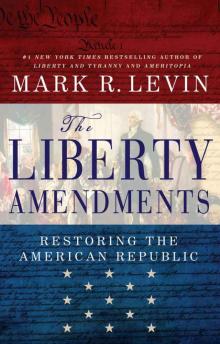 The Liberty Amendments: Restoring the American Republic
The Liberty Amendments: Restoring the American Republic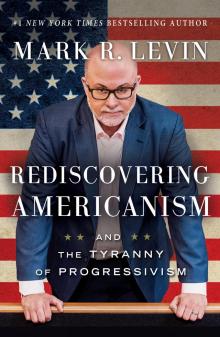 Rediscovering Americanism: And the Tyranny of Progressivism
Rediscovering Americanism: And the Tyranny of Progressivism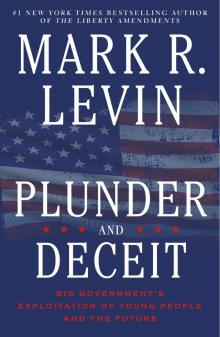 Plunder and Deceit: Big Government's Exploitation of Young People and the Future
Plunder and Deceit: Big Government's Exploitation of Young People and the Future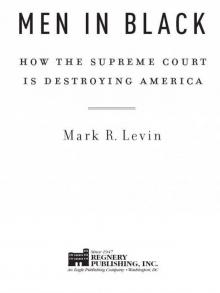 Men in Black: How Judges Are Destroying America
Men in Black: How Judges Are Destroying America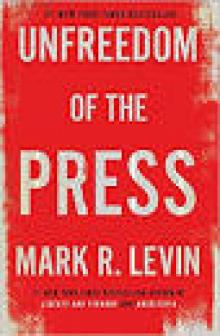 Unfreedom of the Press
Unfreedom of the Press Ameritopia: The Unmaking of America
Ameritopia: The Unmaking of America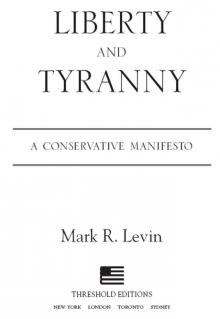 Liberty and Tyranny
Liberty and Tyranny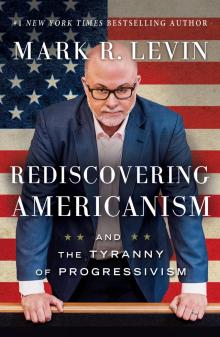 Rediscovering Americanism
Rediscovering Americanism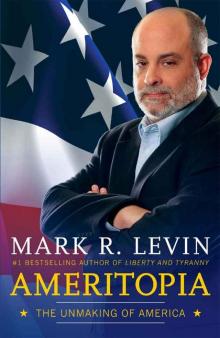 Ameritopia
Ameritopia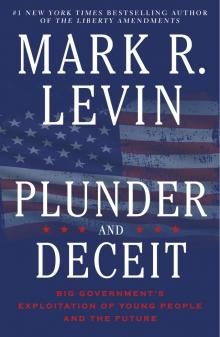 Plunder and Deceit
Plunder and Deceit